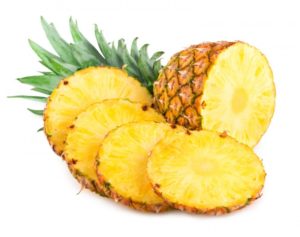 CANEY DE ORIENTE, FRUTAS DULCES COMO AZUCAR…
CANEY DE ORIENTE, FRUTAS DULCES COMO AZUCAR…
Seria imposible hablar de Santiago de Cuba sin referirse a El Caney, con tierras bondadosas para las frutas muy dulces, que incluso han inspirado a compositores como el coterráneo Félix B. Caignet con un son pregón popularizado en el mundo.
En muchos salones se escucharon al Trío Matamoros, Ñico Saquito, Francisco Repilado (Compay Segundo) y otros cantores con su letra: ¡Frutas!/ ¿Quién quiere comprarme frutas?/ ¡Mangos!/ De mamey y bizcochuelo/ ¡Piñas!/ Piñas dulces como azúcar/ cosechadas en las lomas de El Caney./
Surgido en 1629 con el nombre de Comunidad India del Caney o San Luis de los Caneyes, ese terruño oriental acogió en sus campos a familias burguesas de la cabecera en casas-villas o fincas de recreo, que hoy forman parte del patrimonio arquitectónico cubano.
https://youtu.be/Lshk4WWx5ko
Excelentes miradores naturales tiene en sitios como El Escandel y El Viso, este último considerado monumento histórico donde existe un fuerte militar de la época de la colonia.
Fiel a sus tradiciones culturales como el pregonero y el festival de las frutas, El Caney atesora una de las colecciones de helechos más importantes del continente, superada solo por la del Jardín Botánico de Nueva York.
Ese terruño posee en verdad muchos valores históricos, culturales, ambientales y paisajísticos pero, sin dudas, como más lo identifican es por las sabrosas frutas.
Así lo ratifican las letras de Félix B. Caignet, cuando dijo en el son pregón que están saturadas de miel.
 CANEY OF ORIENTE, SWEET FRUITS LIKE SUGAR …
CANEY OF ORIENTE, SWEET FRUITS LIKE SUGAR …
It would be impossible to talk about Santiago de Cuba without referring to El Caney, with kind lands for very sweet fruits, which have even inspired composers such as the countryman Felix B. Caignet with a popular proclamation in the world.
In many rooms, the Matamoros Trio, Ñico Saquito, Francisco Repilado (Compay Segundo) and other singers were heard with their lyrics: Fruits! / Who wants to buy me fruits? / Mangos! / De mamey y biscuit / Pineapples! / Pineapples! sweet as sugar / harvested on the hills of El Caney./
Born in 1629 with the name of the Caney Indian Community of San Luis de Los Caneyes, that eastern terroir welcomed in their fields bourgeois families from the headwaters in houses-villas or recreational farms, which are now part of the Cuban architectural heritage.
Excellent natural viewpoints have sites like El Escandel and El Viso, the latter considered a historical monument where there is a military fortress from the time of the colony.
True to its cultural traditions such as the crier and the fruit festival, El Caney holds one of the most important collections of ferns on the continent, surpassed only by that of the New York Botanical Garden.
That land really has many historical, cultural, environmental and landscape values but, without a doubt, how they identify it most is by the tasty fruits.
This is ratified by the letters of Felix B. Caignet, when he said in his son they are saturated with honey.
Agencies/ RHC/ Marlene Montoya/ Martha Rios/ Internet Photos/ Arnoldo Varona/ www.TheCubanHistory.com
THE CUBAN HISTORY, HOLLYWOOD.



 < CANEY of Oriente, Sweet Fruits Like Sugar... Photos.
< CANEY of Oriente, Sweet Fruits Like Sugar... Photos.




